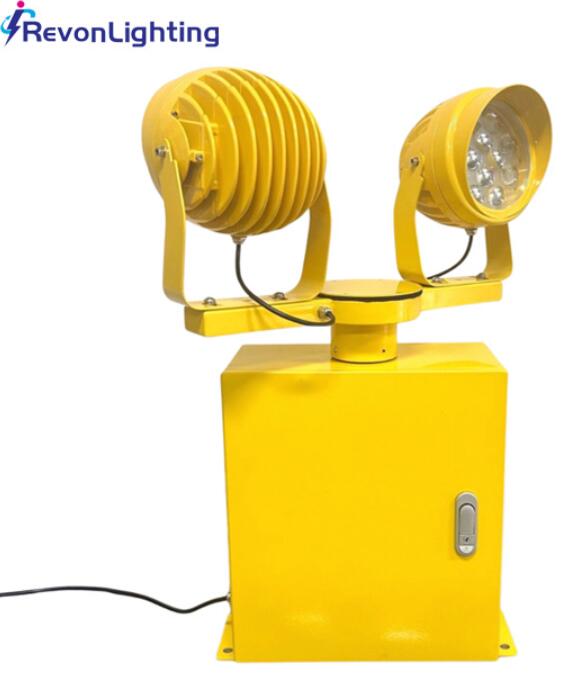As dusk falls across airfields worldwide, a familiar rhythmic flash pierces the darkness - the unmistakable signature of rotating beacon aviation systems. These omnidirectional warning lights serve as critical visual markers, protecting aircraft and infrastructure alike. More than just simple illuminators, rotating beacon aviation installations form the backbone of aerial hazard identification, guiding pilots through the complex visual landscape of modern aviation.
The Critical Role of Rotating Beacon Aviation Systems
Visual Identification in All Conditions
Rotating beacon aviation lights provide 360-degree visibility regardless of weather conditions. Their distinctive rotating flash pattern offers several key advantages:
Immediate recognition by pilots among other ground lights

Enhanced visibility through rain, fog, and snow
Clear differentiation from stationary lighting systems
Regulatory Compliance and Standardization
Aviation authorities worldwide mandate rotating beacon aviation installations at:
Air traffic control towers
Airport terminal buildings
Navigational aid structures
| rotating beacon aviation |
Tall obstructions near flight paths
The FAA (FAR Part 77) and ICAO (Annex 14) establish specific requirements for flash characteristics, color, and intensity to ensure global consistency.
Technical Evolution of Rotating Beacon Aviation Lights
From Incandescent to LED Revolution
Modern rotating beacon aviation systems have undergone significant technological transformation:
Traditional Systems
Motor-driven rotating reflectors
| rotating beacon aviation light |
Sealed beam incandescent lamps
Mechanical failure points
Contemporary LED Solutions
Solid-state reliability with no moving parts
50,000+ hour lifespans
Instant-on capability with no warm-up
Adjustable flash patterns via programming
Smart Beacon Integration
Next-generation rotating beacon aviation units now incorporate:
Light sensors for automatic dusk-to-dawn operation
Remote monitoring capabilities
Built-in diagnostic systems
Solar power compatibility for remote locations
Operational Applications Across Aviation
Airfield Identification
Primary applications include:
Airport beacons: White/green flashes for civilian airports
Heliport beacons: White/yellow/green sequences
Military airbase identification: Dual-peaked white flashes
Obstruction Marking
Rotating beacon aviation systems protect against:
Communication tower collisions
Wind farm hazards
Skyscraper interference in urban areas
Specialized Marine Aviation Use
Unique configurations for:
Offshore helipads
Aircraft carrier operations
Coastal rescue stations
Future Innovations in Rotating Beacon Technology
Enhanced Visibility Systems
Emerging developments focus on:
Variable intensity controls for different weather conditions
Integrated GPS synchronization for phased flashing
Advanced optics for greater light dispersion
Sustainability Improvements
The industry is moving toward:
Solar-hybrid power systems
Energy-recovery circuits
Recyclable component designs
Smart Airport Integration
Future rotating beacon aviation systems will:
Interface with airport management networks
Provide real-time status updates to ATC
Automatically adjust to traffic density
The rotating beacon aviation system remains an indispensable component of global aviation safety infrastructure. From guiding nighttime approaches to marking critical hazards, these pulsating sentinels continue to evolve while maintaining their fundamental mission. As airspace becomes increasingly crowded, advanced rotating beacon aviation technologies will play an even greater role in collision prevention and operational safety. Their distinctive flash will remain a universal language of aviation safety for decades to come, visible proof of the industry's commitment to protecting lives in all flight conditions.